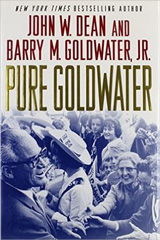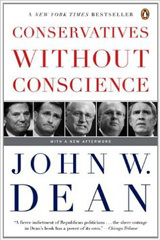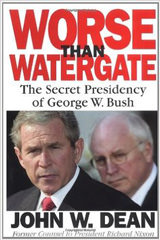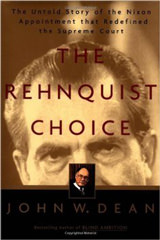It has been on my “to do” list for a while to check to see what happened to the $27 million lawsuit that was filed by Vicki Iseman against The New York Times following the defeat of Senator John McCain’s presidential run in 2008. Every time I see McCain—which is pretty often, for he is always busy trying to get the United States into a major war somewhere, anywhere—I fleetingly flash on the remarkable story that produced Ms. Iseman’s lawsuit.
Just as McCain was emerging in 2008 as the presumptive GOP presidential nominee, The New York Times tossed a weapon-of-mass-destruction-type story at his campaign on February 8, 2008. It opened as if it had been written for The National Enquirer: “Early in Senator John McCain’s first run for the White House eight years ago, waves of anxiety swept through his small circle of advisers. A female lobbyist had been turning up with him at fund-raisers, visiting his offices and accompanying him on a client’s corporate jet. Convinced the relationship had become romantic, some of his top advisers intervened to protect the candidate from himself—instructing staff members to block the woman’s access, privately warning her away and repeatedly confronting him . . . .”
The story of the attractive blonde lobbyist, three decades younger that the senator who wanted to be president, became instant world news. McCain’s denial seemed weak in calling it a “hit and run smear campaign,” when tabloid journalism was not the style of America’s newspaper of record. Other Washington journalists figured that The Times had finally nailed a story that had been rumored to be true for years. The woman named by The Times, Vicki Iseman, also denied the story, but was nowhere to be found. The story tumbled through several cycles with the Times refusing to back off, notwithstanding a firestorm of responses from Republicans (and even a few Democrats) to the thinly-written report of the “illicit sex” and influence-peddling, and it attracted even more negative responses when The Times’ ombudsman editor wrote, “if a newspaper is going to suggest an improper sexual affair . . . , it owes readers more proof than The Times was able to provide.”
Unfortunately, however, John McCain really had no attractive legal remedy.
McCain Had No Solid Legal Remedy
For all practical purposes, a presidential candidate like John McCain has no attractive legal remedy of which to avail himself in order to establish the falsity of the claims against him. Certainly, there was no remedy at all to be had before the election. Had McCain filed a fast lawsuit against The New York Times, he would never have been able to resolve it before the election. The Times has insurance covering such litigation costs, and a very able team of lawyers to defend its interests. In addition, the underpaid and overworked federal judiciary docket is crowded, and as a defendant, The New York Times would have undertaken extensive discovery—digging for dirt to try to force McCain to back off. The process alone could have taken years. In addition, a defamation defendant will file any number of aggressive pre-trial motions to try to dismiss the case against it, and failing that, to narrow the issues, which also can take years.
After the election, when time was not an issue, McCain could have filed a defamation action against the Times. But he was surely very aware of the difficulty of doing so, based on the experience of his former Arizona colleague in the Senate and GOP presidential predecessor, Barry Goldwater, who had undertaken just such an action when he had been defamed by Ralph Ginzburg in his FACT magazine September-October 1964 issue, which reported as follows: “1,189 Psychiatrists Say Goldwater is Psychologically Unfit to be President,” with that headline being the nicest part of the special issue. It took years, and a lot of money, for Goldwater to prevail, because the U.S. Supreme Court has set appropriate—albeit very high—standards under the First Amendment when the alleged defamation at issue involves a public official or public figure. The rationale for allowing liberal rules in public-figure defamation cases is that the Court wants to provide plenty of room for uninhibited public debate on issues of public importance, and making defamation suits easy to win would chill public debate.
Goldwater, undoubtedly, somewhere along the line told McCain how brutal these lawsuits can be for a plaintiff. It is not merely the discovery that is taken, but also the burden of proving with clear and convincing evidence that the publisher knew that the defamatory statement at issue was false, or acted with total disregard as to whether the statement was true or false, which is the constitutional “malice” standard that the High Court requires. Of course, publishers of defamatory statements always claim that they believed the statement(s) to be true when they printed it, and thus that they acted without constitutional malice, and therefore should not be held liable. Goldwater won, but he had to go all the way to the U.S. Supreme Court to do so, and with a compensatory jury award of only $1.00 and punitive damages of $75,000, it required a lot of his own money to pay the attorneys’ fees.
For McCain, regardless of what the “illicit sex” story did or did not do to his presidential campaign, clearly he had no stomach for a fight with The New York Times after losing in November 1968. But Vicki Iseman decided she was not going to allow the Times to ruin her reputation, and so she filed a defamation case.
Vicki Iseman Sued and Settled With The New York Times, Along With the Reporters and Editors Involved in Her Story
On December 30, 2008, Vicki Iseman filed a defamation lawsuit against The New York Times, and all the editors and reporters involved in the story regarding her “romantic” relationship with Senator John McCain. The case was filed in the U.S. District Court for the Eastern District of Virginia in Richmond. Maybe the most distinguishing feature of the thirty-six page complaint was the group of high-powered attorneys filing it: Not merely the prestigious W. Coleman Allen law firm, but also one of the country’s preeminent defamation and First Amendment scholars, Rodney Smolla—author of a leading treatise on the subject of defamation.
Needless to say, we do not know what happened behind closed doors, since that is known only to the parties and the attorneys involved. But we do know that, rather than proceeding to the usual litigation bloodbath, on February 20, 2009, the case was settled. While The Times did not openly apologize to Ms. Iseman—apparently they never do that—they did eat a remarkable amount of public crow, which is not their norm. They reported on this unusual agreement. The case had been “settled without payment” or The Times’ “retract[ing] the article.” Rather, the Times agreed to publish a “joint statement“ endorsed by both sides and “a note to readers,” plus “commentary“ by Ms. Iseman’s attorneys.
The joint statement outlines the face-saving agreement reached by The Times. The paper would be able to say—and did say – that its original story was accurate. BUT, in a note to their readers, they would also state that the original article (quoted at the outset above) “did not state, and The Times did not intend to conclude, that Ms. Iseman had engaged in a romantic affair with Senator McCain or an unethical relationship on behalf of her clients in breach of the public trust.” In short, rather than apologize and/or retract, they would merely say what they said is not what they meant, and that readers should not be fooled into understanding what they read as saying what everybody thought it said. It was a magic settlement, with the words used losing their normal meaning.
But for me, the most interesting part of the settlement was the commentary by Coleman Allen and Rodney Smolla. They outlined what had happened; added a few nice things about their client, Ms. Iseman; and then stepped back and reminded us all of the bigger picture, and the fact that American defamation law is something of a disaster, but without being that blunt. Rather, Coleman and Smolla reminded us that “[w]ords have extraordinary power to wreak havoc on the life of a human being,” citing Shakespeare’s Othello on the value of “good name,” and then Justice Potter Stewart on the recognition of the right to protect reputation as reflecting “our basic concept of the essential dignity and worth of every human being—a concept at the root of any decent system of ordered liberty.”
The Ignored Call for a Debate
Coleman and Smolla continued: “Had this case proceeded to trial, the judicial determination of whether [their client, Ms. Iseman, was] entitled to the protections afforded a private citizen would have been the subject of a ferocious, pivotal battle, with Ms. Iseman insisting on her status as a private person and The New York Times asserting that she had entered the public arena, and was therefore fair game. That judicial contest has now been concluded in this instance, but the issue deserves ongoing scrutiny, certainly in our schools of law and journalism, but also in the arena of public debate.”
What Coleman and Smolla are saying is that had their client been deemed a public figure, and then treated like a public official under the defamation law, they would have had a very difficult and expensive case on their hands. Plus, there had been a steady trend by courts to simply rule that almost everyone, for some reason or another, is either a public figure (e.g., a celebrity, a politician, a prominent business or labor leader, or anyone who thrusts himself or herself to the forefront of a public debate can become a “limited” public figure) or a public official (e.g., any officeholder at any level of government, and almost all local, state or federal government employees). The point that Coleman and Smolla made is that we are approaching the point where everyone is a public official or public figure under the defamation law, and if we actually reach that point, then no one can safely protect his or her reputation.
Coleman and Smolla hoped that the way in which Ms. Iseman had settled her case would provoke a public debate about the law of defamation. That has not happened. The New York Times and other influential media do not want that debate. They want to do precisely what The Times got away with doing: publishing false information about Vicki Iseman and Senator John McCain, claiming they had a romantic affair, when they clearly had did not have a shred of court-admissible evidence to support the truth of this claim, and they got away with it. The Times won. The truth lost. Tomorrow, someone else could cite The New York Times to claim that such an affair indeed took place because The Times refuses to admit that it was wrong.
Truth is seriously suffering under current defamation law, which is not healthy for a democracy, nor for reputations in a digital/information age. Stay tuned, as I have much more to say about this increasingly appalling situation. Remember, if this has not happen you already, you too may be a public official or public figure only by reason of your tweets, your time on Facebook, or your blogging, or your profession or political activities.















I think we are currently facing a crisis point. One of three things will happen: (1) Everyone will have privacy. (2) No one will have privacy. (3) Extremely rich and powerful people will be the only people with any shreds of privacy.
What bothers me about this situation is that most people have no real understanding of the threats. Most often they think alone the lines “I haven’t done anything wrong, so why should I worry?” The larger answer has to do with freedom in the sense of meaningful and unconstrained choice. It isn’t merely that negative personal information can be used against you (and no one is perfect), but that even the positive personal data about your interests and strengths can be used to control and manipulate you and thereby remove your personal freedom.
I actually think there is a solution, but I see no way to move there. “Possession is nine points of the law”, and we should have the physical possession of our personal information. Any personal information about us should be stored only with our knowledge, only in places where we know, and used only our permission. In my own case, that would mean storage on my own computer, and any person or corporation that wanted to look at it would have to say why, identify themselves, receive my permission, and then erase the data after they had used it for the purposes to which I’d agreed to. Amusing theory, eh?